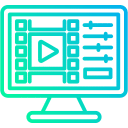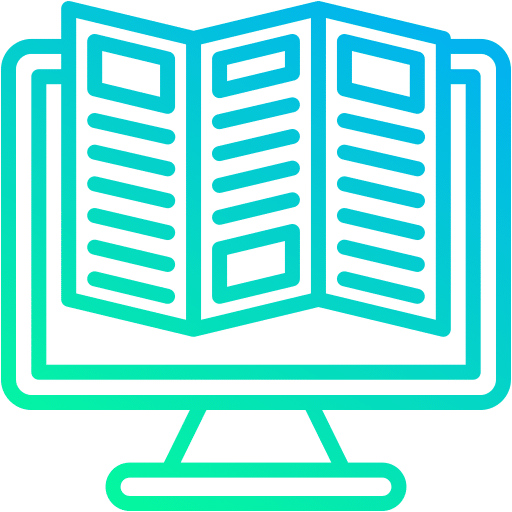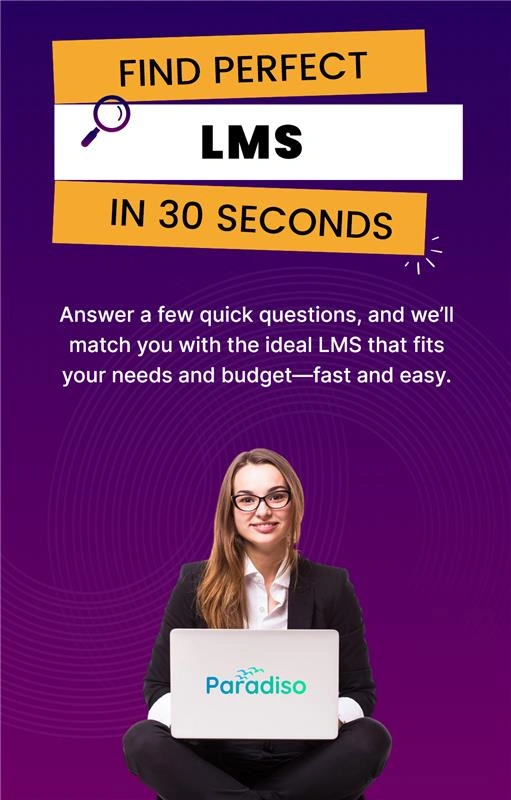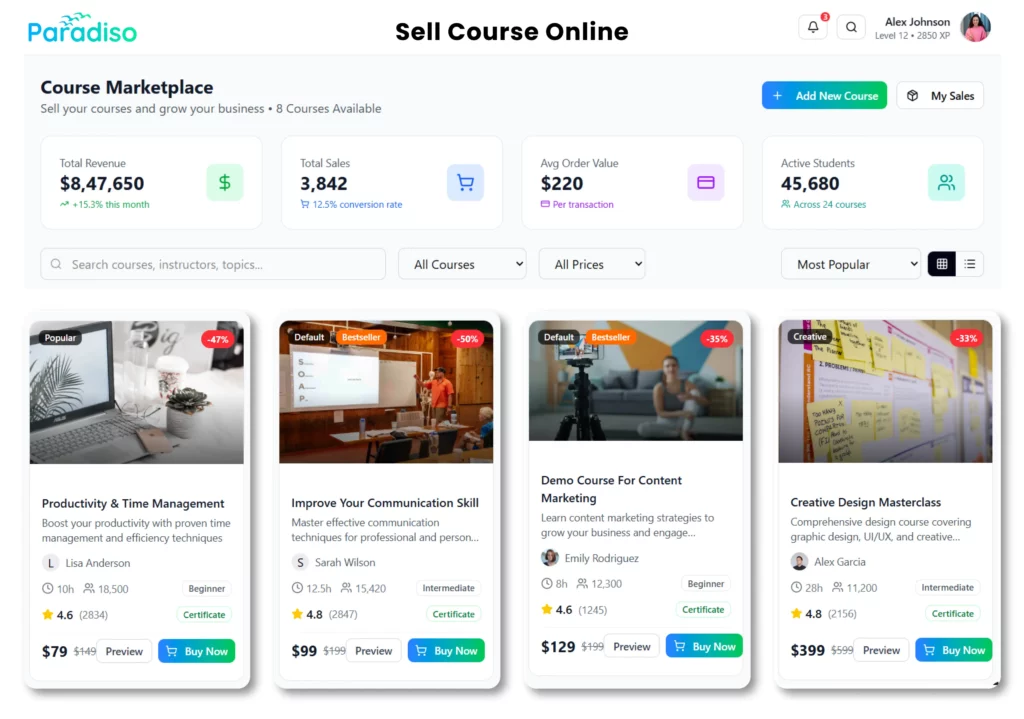Selecting the right Learning Management System (LMS) can transform your employee training initiatives. An effective LMS streamlines training, keeps your organization compliant, and supports employee development. In this blog, we dive into the top LMS features that every business should consider, explore different types of LMS platforms, and discuss what makes a learning management system truly exceptional.
10 Essential Learning Management System Features
A robust LMS should offer a suite of features that not only support the training process but also enhance user engagement and simplify administrative tasks. Below are the 10 essential learning management system features to look for when evaluating a new platform.
1. Course Management Tools
At the heart of every LMS lies efficient course management. These tools allow HR teams to:
- Create and organize content: Use course creation templates to build structured learning modules.
- Monitor progress: Track learner progress to ensure employees are following their prescribed learning paths.
- Assign courses: Easily allocate training to individuals or teams, ensuring that everyone receives the necessary education.
This functionality makes it simple to align training with business objectives and ensures that learning programs run seamlessly.
2. Gamification
Integrating gamification elements into your LMS can turn routine training into an engaging experience. Gamification typically includes:
- Quizzes and interactive challenges
- Badges and certificates for milestones
- Leaderboards for healthy competition
These elements encourage learners to stay motivated and improve retention, transforming training from a mundane task into an opportunity for personal growth.
3. Mobile Compatibility
In today’s fast-paced work environment, employees need the flexibility to learn anytime, anywhere. A mobile-compatible LMS enables:
- Learning on-the-go: Access training content from smartphones and tablets.
- Remote and travel-friendly learning: Ensure remote employees or those on the road never miss a training session.
This flexibility is crucial for organizations with a distributed workforce, ensuring that learning management system features are accessible regardless of location.
4. Integration Capabilities
An LMS that integrates seamlessly with your existing business systems can significantly reduce administrative burdens. Key integrations include:
- HRIS and payroll systems: Automate data transfer to keep employee records up-to-date.
- CRM platforms: Align training outcomes with customer engagement strategies.
These integrations minimize manual data entry, improve data accuracy, and ensure that your training efforts are synchronized with other business operations.
5. Certification and Compliance Tracking
For industries where regulatory standards are strict, certification and compliance tracking are essential. A top LMS should allow HR managers to:
- Monitor certification status: Track which employees have met compliance requirements.
- Automate reminders: Ensure employees renew certifications on time.
- Document training: Provide evidence of compliance for audits.
This feature not only reduces the risk of non-compliance but also streamlines the process of managing mandatory training programs.
6. Customization Options
Customization is a standout feature in modern LMS platforms. It allows organizations to tailor the system to their unique needs by:
- Branding the interface: Ensure the LMS reflects your company’s identity.
- Personalizing content: Adapt learning modules to meet specific industry or company requirements.
- Offering pre-built courses: Leverage a catalog of courses on critical topics, with the flexibility to create your own content.
Customizable LMS features guarantee that the platform aligns with your corporate culture and training goals.
7. User-Friendly Interface
A clean, intuitive user interface is critical for high adoption rates. The best LMS platforms focus on:
- Ease of navigation: Users should find it simple to locate and complete courses.
- Clear instructions: Provide straightforward guidance to help learners stay focused on the content.
- Accessibility: Ensure that the interface is usable by employees of all technical skill levels.
A user-friendly design minimizes the learning curve, ensuring that the system supports, rather than hinders, your training objectives.
8. Automated Notifications and Reminders
Staying on top of deadlines and course completions is easier with automated notifications. This feature:
- Sends timely reminders: Alerts employees about upcoming deadlines or incomplete courses.
- Reduces manual follow-up: Allows HR teams to automate routine communications.
- Keeps learners engaged: Ensures that employees remain on track with their training milestones.
Automation in an LMS reduces administrative workload and keeps training programs running smoothly.
9. Social Learning Features
Learning is often more effective when it’s collaborative. Social learning features in an LMS include:
- Discussion forums: Enable employees to ask questions and share insights.
- Peer-to-peer communication: Foster a supportive learning community.
- Group projects: Encourage teamwork and collective problem-solving.
These tools not only enhance engagement but also build a culture of continuous learning within your organization.
10. Reporting and Analytics
A comprehensive reporting and analytics feature is indispensable for evaluating the success of your training programs. A strong LMS should provide:
- Detailed progress reports: Monitor employee performance and course completion rates.
- Data-driven insights: Identify skill gaps and areas for improvement.
- ROI measurement: Help justify training investments by showing measurable outcomes.
With robust reporting tools, HR managers can make informed decisions to optimize future training initiatives.
Types of Learning Management Systems
Understanding the different types of LMS platforms can help you select a system that aligns with your organizational needs. Here’s a breakdown of the common LMS types available.
Cloud-Based LMS vs. Self-Hosted LMS
Cloud-Based LMS:
- Hosted on the provider’s servers.
- Offers ease of setup, maintenance, and scalability.
- Comes with automatic updates and built-in security.
- Ideal for businesses looking for a flexible, low-upfront-cost solution.
Self-Hosted LMS:
- Installed on the company’s own servers.
- Provides greater control over customization and data security.
- Requires a dedicated IT team for maintenance and updates.
- Best suited for organizations with specific security or customization needs.
Enterprise LMS vs. SMB LMS
Enterprise LMS:
- Designed for large organizations with complex, multi-department training needs.
- Features advanced reporting, multi-user support, and extensive customization.
- Offers scalability and robust support to manage a diverse workforce.
SMB LMS:
- Tailored for small and medium-sized businesses.
- Focuses on core functionalities and ease of implementation.
- Cost-effective and straightforward, ideal for organizations with simpler training requirements.
Open-Source (Free) LMS vs. Commercial LMS
Open-Source LMS:
- Free and highly customizable.
- Requires technical expertise for installation and ongoing maintenance.
- Suitable for organizations with strong IT support and a desire for full control over the training platform.
Commercial LMS:
- A paid service with ready-to-use features.
- Comes with customer support, regular updates, and enhanced security.
- Ideal for organizations seeking a turnkey solution without extensive technical management.
What Makes a Good Learning Management System?
A high-quality LMS is defined by its ability to support and enhance training programs effectively. Here are three key factors that separate the best systems from the rest.
Reporting Capabilities
An LMS should provide comprehensive reporting tools that allow you to:
- Track learner progress: Get real-time insights into how employees are performing.
- Measure training outcomes: Use analytics to understand the effectiveness of each training module.
- Support compliance: Maintain records of mandatory training and certifications for audits and regulatory needs.
Robust reporting capabilities enable HR teams to identify areas for improvement and ensure that training investments yield measurable results.
Customization
The ability to tailor the LMS to your organization’s specific needs is crucial. Customization features might include:
- Personalized learning paths: Create bespoke training journeys for different roles.
- Branded interfaces: Ensure that the system reflects your company’s visual identity.
- Adaptable content: Modify course materials to suit industry standards and internal policies.
A customizable LMS ensures that your training platform resonates with your employees and supports your corporate culture.
System Integration
For an LMS to be truly effective, it must integrate seamlessly with your existing business tools. This includes:
- HRIS and payroll systems: Streamline employee data management.
- CRM platforms: Link training outcomes to customer service and sales performance.
- Other enterprise tools: Ensure that the LMS is a central hub for all employee development efforts.
Smooth integration minimizes data silos and automates routine administrative tasks, freeing up valuable time for HR teams.
Conclusion
Investing in a high-quality Learning Management System with top LMS features is a strategic move for any organization committed to employee development. By choosing a platform that offers robust course management tools, gamification, mobile compatibility, seamless integration, and detailed reporting, HR managers can significantly enhance the training experience. Whether you opt for a cloud-based, enterprise-level solution or a more streamlined, cost-effective platform, the right LMS will help you stay compliant, reduce administrative burdens, and ultimately foster a culture of continuous learning.
Understanding the distinctions between different types of LMS and TMS solutions ensures that you select a system that aligns perfectly with your company’s needs. With features designed to automate notifications, facilitate social learning, and provide deep insights into training outcomes, a modern LMS not only meets today’s requirements but also evolves to support future growth.
By leveraging the power of an effective LMS, HR managers can simplify training processes, boost employee engagement, and drive organizational success. Embrace the future of training by choosing an LMS that works as hard as you do—one that truly transforms busy work into a streamlined, efficient, and engaging learning experience.














